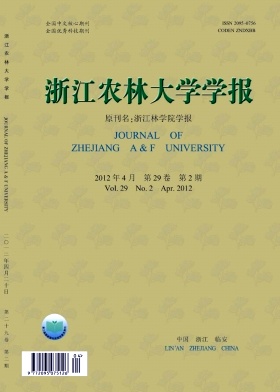High-resolution remote sensing of textural images for tree species classification
doi: 10.11833/j.issn.2095-0756.2012.02.010
- Received Date: 2011-06-13
- Rev Recd Date: 2011-09-10
- Publish Date: 2012-04-20
-
Key words:
- forest management /
- tree species classification /
- moving window /
- textural features /
- overall accuracy /
- gray level co-ocurrence matrix (GLCM)
Abstract: Remote sensing images show a very promising perspective for distinguishing tree species,especially those with the very high resolution ranging from 1 to 4 m. However,the traditional methodology for classifying land cover types,solely depending on spectral features,while texture and other spatial information are neglected,has the weakness such as inadequately utilization of information,low accuracies of classification etc. Considering to the texture differences among forest species,it is more important for spatial information discription of high-resolution remote sensing image to improve the precision of textural features choosing. In this study,the factors to influence the nine textural features choosing were analyzed and the results showed that the moving window size was the main factor to affect the obtaining processes of textural features based on the gray level co-occurrence matrix (GLCM) method,and the imagery was then classified combining the maximum likelihood classification (MLC) method with the original spectral values and texture features. First,this study utilized a correlation analysis of the images from a principal component analysis. Second,through multiple information sources,including textual features derived from the data. For the high-resolution remote sensing image,the most proper moving window size was determined from 3 3 to 31 31. Classification of the major tree species throughout the study area (the SunYat-Sen Mausoleum in Nanjing) was undertaken using the MLC. Third,to aid forest research,classification accuracy was improved using the GLCM. According to correlations among textures and richness of the data,GLCM provided the best window size and textural parameters. Results indicated that the texture characteristics were add in the spectral characteristics to improve the precision of the results of the classification,19 19 window for best window. The total precision can reach 66.322 6%,Kappa coefficient is 0.5840. Each tree species has greatly improved accuracies of the classification. By the calculation of R2 values,the textural features of mean,homogeneity and correlation were chosen to be best combination for the size of 19 19 and the combination of skewness,homogeneity and mean was considered the most properly for the moving window size 19 19. Precision assessment of different textural combinations showed that VA,HO,CR combination with optimal moving window size (from 3 3 to 31 31) could evidently improve the classification precision for high-resolution remote sensing image. And the combination of mean,homogeneity,skewness,and contrast texture factors correlation can effectively reduce data redundancy,which obtained the similiar results. In the texture features,the mean is the most important factor and impacts the classification of the tree species. This method could solve problems of forestry type classification,tree species classification etc. It is much better than traditional method of based on pixel values. This procedure effectively reduced data redundancy and could assist in tree species classification.[Ch,4 fig. 3 tab. 19 ref.]
| Citation: | WANG Ni, PENG Shi-kui, LI Ming-shi. High-resolution remote sensing of textural images for tree species classification[J]. Journal of Zhejiang A&F University, 2012, 29(2): 210-217. doi: 10.11833/j.issn.2095-0756.2012.02.010 |






 DownLoad:
DownLoad: